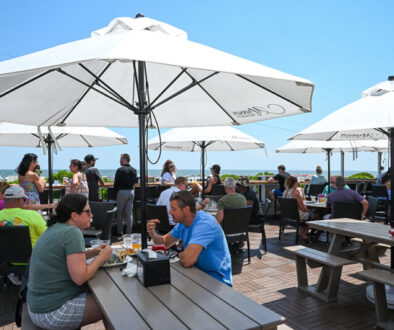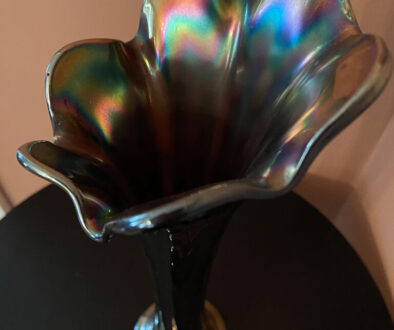Del Haven Watchpoint
When most people go to buy a home, they look for a general area, a nice house, often somewhat near work, and where amenities are good for their life. For me, it is a Google Earth pick. Where is the best place for birds and migration? Then I look for the best house, or lot, where I can make the perfect birding house. What is the perfect birding house? It must have big windows that look out into nature where I can see boatloads of birds either migrating, or very close by. Ideally, my office window is in a location where the view is great. This is where I spend most of my time, so if you have to work, you might as well bird at the same time. Good vegetation and a pond are not tough to add.
I spent 20 years in West Cape May. I targeted the perfect field and was able to get the owner to sell it to me. Tom D made the Crossley family, particularly me, very happy for 20 years. I just purchased my second dream house, in Del Haven. Unlike the first one that involved a subdivision, road, designing the house, and so on, this one was already built, though it had been derelict for some time. However, with three decks looking right down a row of trees along the bay, it didn’t really matter. I moved in early October. My housewarming gift the day after was 23,000 Northern Flickers bouncing over with bright yellow underwings, 7500 chunky Parula Warblers, and birding mayhem the first three hours after daylight. A sliding door accidentally left open was not a good thing, with quite a few birds having to be shepherded out by a friend, Trish. Individual birds don’t mean a lot to me relative to migration spectacles. The big ones, like this one, are what I live for.

Why is it good? In fall, particularly after the northwest winds of a cold front, birds fly back into the wind heading north. The westerly component keeps them close to the bay. Most skirt Fishing Creek Marsh, following the bushes next to the bay and past my place. The narrow strip of vegetation on Delaware Avenue just off Sunray Avenue, concentrates the birds along this flyway. In recent years this site has become very popular. New Jersey’s first record of Kirtland’s Warbler added to its notoriety.
This migration spectacle has always fascinated me since I first came here to the Cape May area as a 21-year-old. The questions around this miracle of migration remain the same. Where are they going, why are they flying back north in fall, how far are they flying each day, and when do they rest?
We have always speculated that birds have “overflown” at night and are going back to where they think they should be in the morning, usually called “reorientation.” Recently, I have felt this is not correct. I believe they want to carry on migrating in the daytime but need to feed at the same time. Taking the shortest route is not so important. Taking advantage of the weather conditions is. For landing, take-off, and being able to feed efficiently, they want to fly into the wind. Of course, planes do the same for most of these reasons. At night these birds fly with the wind much higher, but of course, they are only migrating, not feeding. These birds fly over Delaware Bay at night but not in the daytime. Why? The answer to that question is still not obvious; the lack of food is one possible answer.

The first few hours after daylight often see mixed flocks “hopscotching” 100 yards at a clip, then feeding for a minute before jumping to another distant group of trees. The flocks are presumably mixed to reduce competition for food. Perhaps there are other reasons too. It is amazing how many birds can pass by, but by lunchtime it is almost impossible to find anything. Where did they all go? You would think the answer is obvious, but it is not. What is really fascinating is that we know so little about this phenomenon that occurs throughout the northern hemisphere. Oh, to be young again with all the technology that will, no doubt, make a much clearer picture.
I love the spectacle, though some find it frustrating. Lots of nameless birds zipping past are space invaders on steroids for me; not for others. Alternatively, you can just sit quietly next to a strategically located bush. Before long it will be full of jewels. They won’t stay long before zipping off. Chances are they will be replaced by more gems very quickly. Instead of thinking about their names, wonder about their lives, personality, beauty, and mystery. What we don’t know is so much more fascinating that what we do know, don’t you agree?



